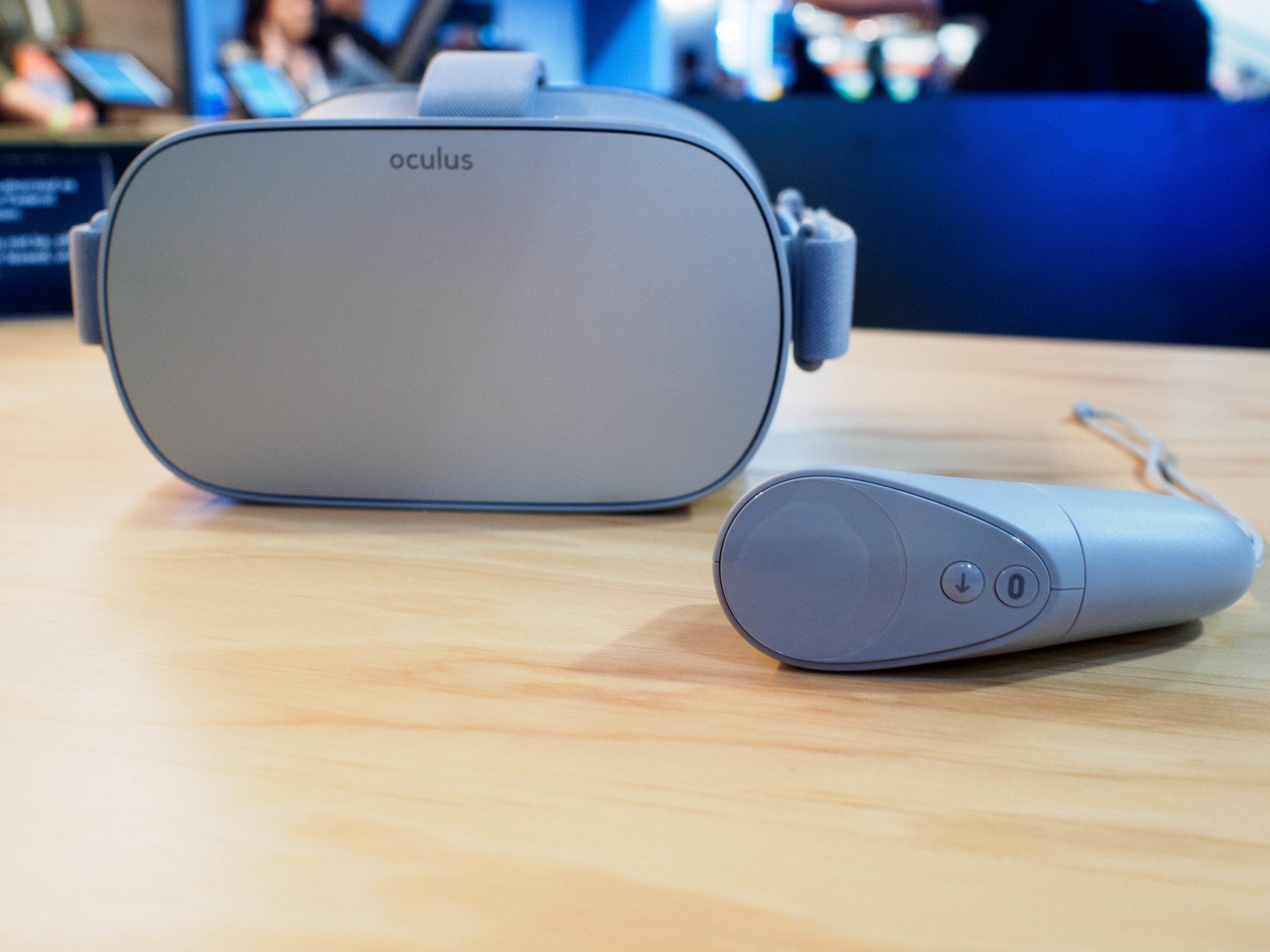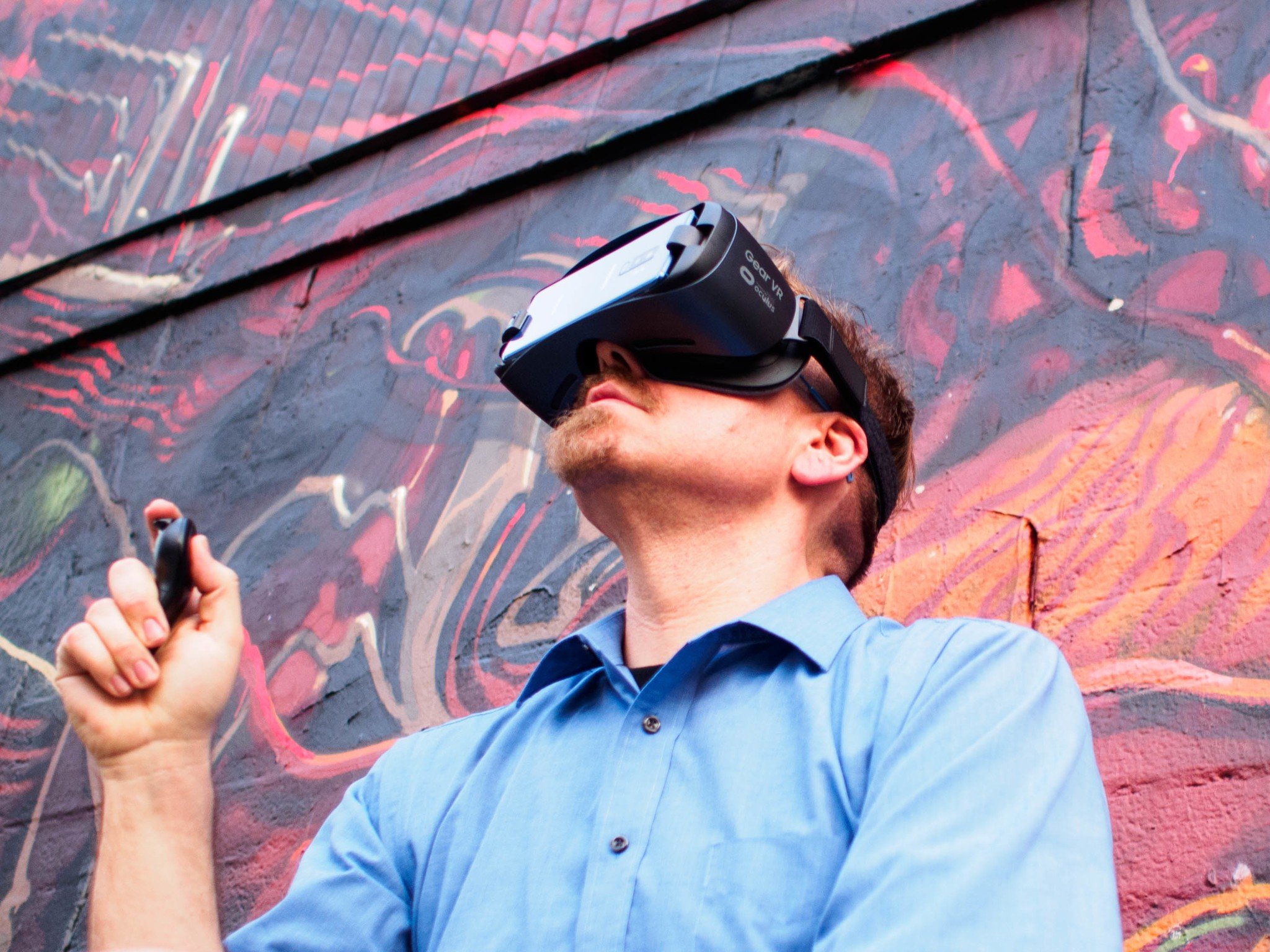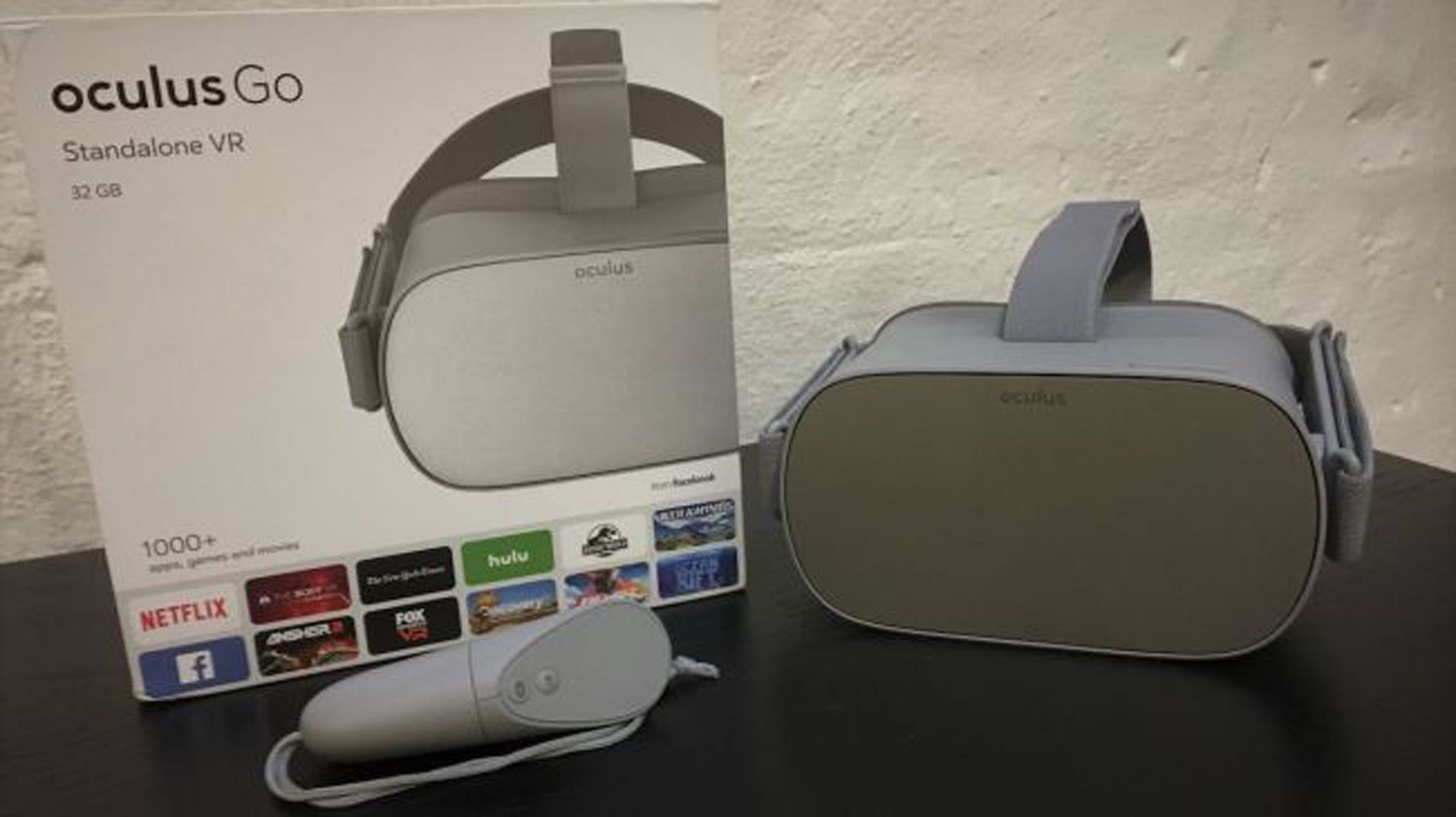Take your VR experience with your everywhere, but do you really need your phone to do it?
Oculus and Samsung have been working together for years on a portable, powerful VR solution using some of the most popular phones on the planet. In doing so, the Gear VR has become one of the most vibrant and active VR headsets available today. For all of its strengths, it still requires you use your phone and drain your battery to get the best experience. With everything it has learned about mobile computing and VR experiences, Oculus is prepared to offer an alternative to the phone-powered portable VR headset. It's called Oculus Go, and it's coming later this year at a price aimed to make people question using the Gear VR or using this new headset.
This isn't an easy decision to make, especially if you are already a part of the Gear VR ecosystem, but here's what you can expect when looking at these headsets side-by-side.
Hardware Compared
Oculus Go is made to be a "standalone" VR headset. That means, instead of sticking a phone into a slot to act as the brain, the computer and display and motion hardware is baked right into the headset. The only thing that computer ever has to do is show you VR experiences, but it has to do so very well. With that in mind, here's how these headsets compare on paper.
| Feature | Oculus Go | Gear VR |
|---|---|---|
| Field of View | Unknown | 101 degrees |
| Processor | Snapdragon 821 | Depends on phone |
| Memory | 3GB RAM | 4GB RAM |
| Audio | Internal speakers, 3.5mm headphone jack | Phone speaker, 3.5mm headphone jack |
| Storage | 32GB, 64GB | 64GB onboard storage, microSD slot |
| Battery | Unknown | Depends on phone |
| Display | LCD display (1280x1280 usable @ 72hz) | AMOLED (1024x1024 usable @ 60hz) |
| Sensors | 3DoF Gyroscope, Accelerometer, Magnetometer | 3DoF Gyroscope, Accelerometer, Magnetometer |
| Controller | 3Dof Controller | 3DoF Controller |
| Network | WiFi | WiFi, Cellular |
A couple of things stick out right away. First, it's very unlikely a Gear VR will ever be able to offer the kind of long-term VR experience you can get from an Oculus Go with its dedicated battery. Even if you were interested in totally draining a Galaxy S9+, it's not going to last as long as this headset will. The built-in speakers in the Oculus Go are going to sound much nicer than your phone speakers as well, both because the Oculus Go speakers are designed for spatial audio and because the Samsung phone in the Gear VR is farther from your ears. That having been said, if you plan to use headphones most of the time the audio experiences will likely be very similar.
Check out our hands on with Oculus Go for more!
But the big difference here is going to be the display. Oculus has managed to increase the Eye Buffer on the Go display so more pixels can be used to deliver visuals to your eyes. On a Gear VR, the display isn't really built for this experience and so only 1024x1024 pixels can be used to create the visuals that you see. An Oculus Go will be able to use 1280x1280, which makes a considerable difference inside the headset. Coupled with Fixed Foveated Rendering, a new technique Oculus is using to make the parts of the fringes of your vision cost the GPU less to draw, and this headset that seems less powerful on paper will actually meet or outperform the Gear VR in a lot of visual areas.
"The next-generation lenses are our best ever—offering a wide field of view with significantly reduced glare."
The other particularly important detail when comparing these two headsets is the Field of View (FoV) of the lenses. Samsung has been slowly increasing the FoV on the Gear VR until it has reached the current 101-degree measurement, which is close to what you get with a lot of desktop-quality VR experiences. Meanwhile, the Oculus Go developer blog isn't giving us too much information on the FoV.
It's not surprising these headsets look and feel so similar on the outside given how closely Samsung and Oculus have worked together, but it's clear these experiences will not be at all the same when you go to actually use the headsets.
Similar Software
Oculus maintains all of the software for the Gear VR. When you install the Gear VR software on your phone, it's the Oculus Store and Oculus Runtime you are installing. You can't even use your Samsung payment tools to buy VR apps, it all goes through the Oculus services. Samsung makes a couple of great apps for the Gear VR, but this experience is largely made and maintained by Oculus. With Oculus Go, the company is moving from controlling all of the software on an OS made by another company to control the entire experience from top to bottom. There shouldn't be a ton of differences between the Oculus Go and the Gear VR when it comes to software, but it turns out there will be some important initial limitations.
At launch, Samsung's Gear VR will continue to have significantly more apps than Oculus Go. Oculus says it should be trivially easy for Gear VR developers to port apps to the Oculus Go, but that doesn't mean every developer is going to want to. From the retail packaging, we've already seen a number of popular VR experiences will be available on Oculus Go at launch, but very little so far indicates the total number of apps will be anywhere near what the Gear VR currently has available. The biggest difference for developers moving to Go from the Gear VR is being able to optimize with the new features being made available. Oculus says some Gear VR games will be able to accomplish 72FPS on Go with some optimization, where on the Gear VR all experiences are limited to 72FPS. This may seem like a small bump, but it brings these "mobile" headsets that much closer to the 90FPS standard seen on "desktop" VR headsets and that's a big deal.
Considering how similar these headsets are, it wouldn't be surprising to see this change quickly. We know developers are eager to port games to Go, and many we've spoken to have found the process very easy. With the same basic head tracking and motion control systems in both headsets, as long as Oculus can demonstrate people are actually buying this headset there's little reason for developers to only support the one platform.
Which should you buy?
As similar as these headsets are, there's some clear strengths and weaknesses here. Oculus Go is made to be portable without killing your phone battery, and from our experiences so far does this very well. You can take a Gear VR with you anywhere you can take an Oculus Go, but unless you also carry around a portable battery it's not usually great to use the Gear VR when not at home. Oculus Go, on the other hand, will be just as great at home as it would be in a plane or on a train, and as long as the same quality apps and games from the Gear VR store make it to the Oculus Go quickly you'll be able to really have some fun here.
Naturally, the cost is an issue. Many Gear VR owners got their headset for free when they upgraded to their Samsung phone, and even those who bought the headset typically didn't spend more than $100 for the current kits. Oculus Go is going to be priced at $199 at launch, and while that is super cheap compared to every other VR headset out there it's still $199 more than most folks paid for a Gear VR. Whether that upgrade ends up being worth it will be entirely up to Oculus.





Tidak ada komentar:
Posting Komentar